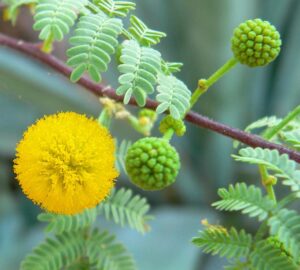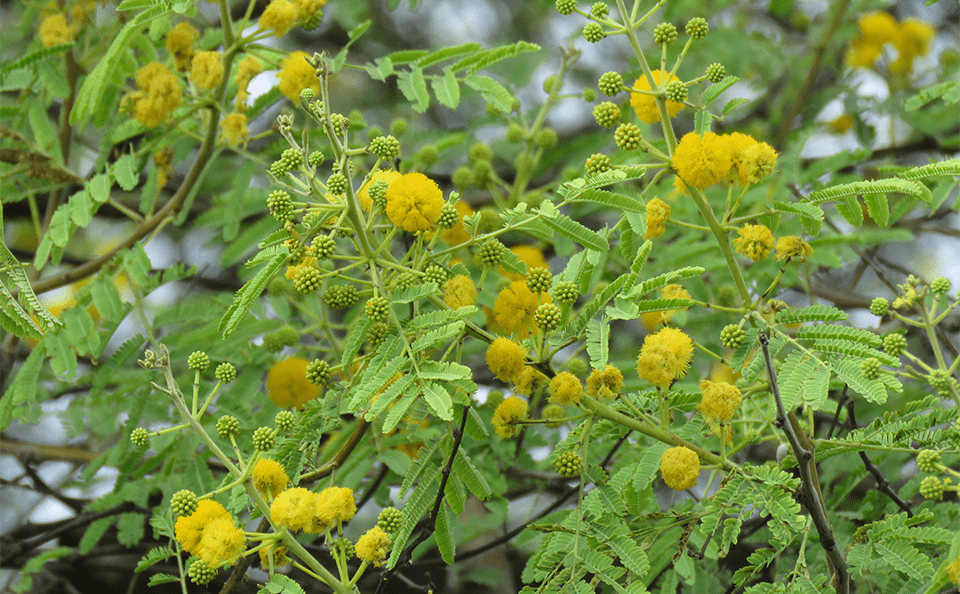Herb
Babula (Vachellia nilotica) Herb Ayurvedic Overview
Babula (Vachellia nilotica) is a medium-sized, thorny, nearly evergreen tree that can reach a height of 20-25 m, and it consists of dried mature stem bark of Acacia nilotica (Linn). Babula trees are mainly found in the dry regions of the whole of India. Babula bark, branches, leaves, pods, and fruit, all parts of the plant, contain a high abundance of medicinal properties. It effectively treats skin conditions, improving oral health, heals the wound, and many more.
Babula is a medicinal tree found throughout the drier and sandy parts of India. It is well-known used for teeth cleaning. Regular use of Babula datun strengthens gums and teeth and reduces plaque accumulation and gingival inflammation. The other parts of the Babula tree used for medicinal purposes are the bark, gum, leaves, seeds, and pods, as they are rich in antibacterial, antihistaminic, anti-inflammatory, astringent, and homeostatic properties.
The bark of babool (Vachellia nilotica) is aphrodisiac, expectorant, and cooling in nature. The gum of babool is also a potent emollient, expectorant, detoxifier, aphrodisiac, and antipyretic. The plant has been used in Ayurvedic field for many years due to its valuable properties. It also helps maintain the tridoshic harmony of Vata, Pitta, and Kapha dosha in the body, immensely boosting metabolism and immunity.
Table of Contents
Scientific Classification of Babula (Vachellia nilotica):
- Kingdom: Plantae
- Clade: Angiosperms
- Order: Fabales
- Family: Fabaceae
- Genus: Vachellia
- Species: V. nilotica
Synonyms of Babula (Vachellia nilotica):
- Sanskrit: Bavari, Kinkirata
- Assamese: Babala
- Bengali: Babla
- English: Babula tree, Indian gum arabic tree
- Gujrati: Baval, Kaloabaval
- Hindi: Babula, Babura, Kikar
- Kannada: Sharmeeruka, Kari Jail, Kari gobli, Pulai Jali
- Kashmiri: Sak
- Malayalam: Velutha Karuvelan
- Marathi: Babhul, Babhula
- Oriya: Babula, Babala
- Punjabi: Kikkar
- Tamil: Karuvelan, Karuvel
- Telugu: Nallatumma, Thumma
Babula (Vachellia nilotica) Description:
 a) Macroscopic: The Bark of Babula (Vachellia nilotica) tree is hard, dark brown or black color, deeply fissured transversely and longitudinally. The inner surface is reddish-brown, longitudinally striated and fibrous, breaks with difficulty, and exhibits a fibrous fracture, taste, astringent.
a) Macroscopic: The Bark of Babula (Vachellia nilotica) tree is hard, dark brown or black color, deeply fissured transversely and longitudinally. The inner surface is reddish-brown, longitudinally striated and fibrous, breaks with difficulty, and exhibits a fibrous fracture, taste, astringent.
b) Microscopic: The transverse section of mature bark shows thin-walled, 15-25 layered, slightly flattened, brown-colored cork cells. A few lenticels formed by rupturing of cork cells, secondary cortical cells ovate to elongated, much stanniferous stone cells, variable in shape and size present in large groups. The secondary phloem 40 consists of sieve tubes, companion cells, fibers, crystal fibers, and phloem parenchyma phloem fibers in many groups and thick-walled, phloem tissues reddish or brown contents present.
The crystal fibers thick-walled, elongated, divided by transverse septa into segments, each contain a prismatic crystal of calcium oxalate, medullary rays uni to-multi- seriate run almost straight, ray cells elongated to polygonal, 20-24 cells high and 2-5 cells wide, crystals of calcium oxalate found scattered among the stone cells of the secondary cortex and phloem parenchyma.
Powder: Powder as such reddish-brown colored. Under a microscope, it has many colorful crystals of stone cells and calcium oxalate.
Identity, Purity, and Strength of Babula (Vachellia nilotica):
- Foreign matter Not more than 2 percent, Appendix 2.2.2.
- Total Ash Not more than 15 percent, Appendix 2.2.3.
- Acid-insoluble ash Not more than 2 percent, Appendix 2.2.4.
- Alcohol-soluble extractive Not less than 6 percent, Appendix 2.2.6.
- Water-soluble extractive Not less than 4 percent, Appendix 2.2.7.
Chemical Constituents of Babula (Vachellia nilotica):
The main constituents of Babula are Tannins and gum. The flowers are rich in flavonoids like kaempferol 3- glucoside, iso-quercetin and leucocyanidin.
Ayurvedic Properties and Action of Babula (Vachellia nilotica):
- Rasa: Kashaya
- Guna: Guru, Ruksha, Vishada
- Virya: Shita
- Vipaka: Katu
- Karma: Grahi, Kaphahara, Vishaghana
Ayurvedic Formulation made by Babula (Vachellia nilotica):
The Ayurvedic Formulations of Babul are Babbularishta, Trayodoshang guggal, Dasankanti churan, Khadiradi gutika.
Therapeutic Uses of Babula (Vachellia nilotica):
The main therapeutic uses are Kushtha, Krimi, Daha, Vrana, Asya roga, Pittahara, Atisara, Kasa, Pravahika, Prameha, Shukrastambhana.
Dose of Babula (Vachellia nilotica):
- 50-100 ml of the drug for decoction in divided doses.
- 3-6 gm of seed powder.
Reference:
Ayurvedic Pharmacopeia of India.


